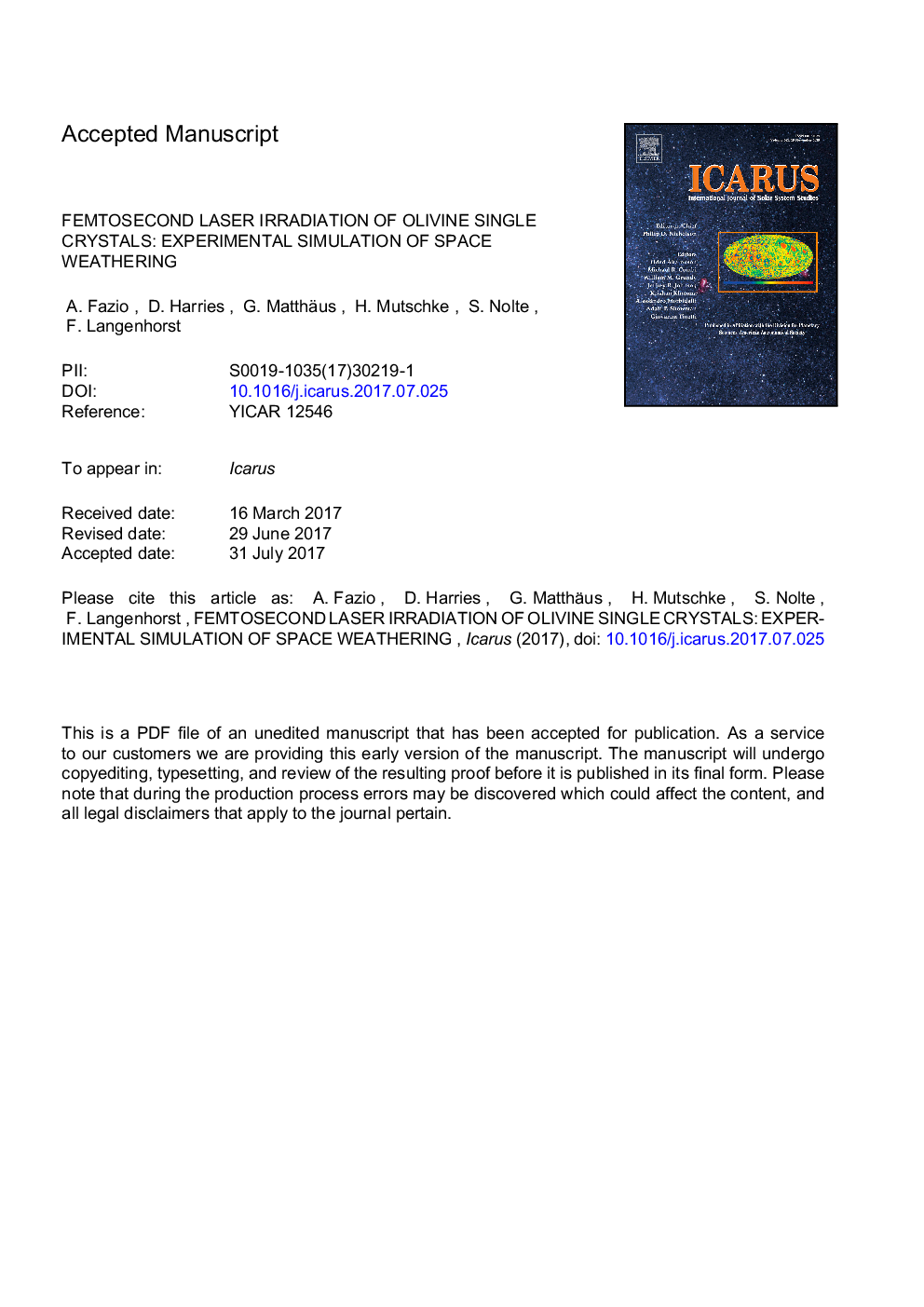| کد مقاله | کد نشریه | سال انتشار | مقاله انگلیسی | نسخه تمام متن |
|---|---|---|---|---|
| 5487227 | 1523492 | 2018 | 28 صفحه PDF | دانلود رایگان |
عنوان انگلیسی مقاله ISI
Femtosecond laser irradiation of olivine single crystals: Experimental simulation of space weathering
دانلود مقاله + سفارش ترجمه
دانلود مقاله ISI انگلیسی
رایگان برای ایرانیان
کلمات کلیدی
موضوعات مرتبط
مهندسی و علوم پایه
علوم زمین و سیارات
علوم فضا و نجوم
پیش نمایش صفحه اول مقاله

چکیده انگلیسی
Space weathering is one of the most common surface process occurring on atmosphere-free bodies such as asteroids and the Moon. It is caused mainly by solar wind irradiation and the impact of micrometeoroids. In order to simulate space weathering effects, in particular those produced by hypervelocity impacts, we produced microcraters via ultra-short (â¼100â¯fs) laser irradiation of crystallographically oriented slices of forsterite-rich (Fo94.7) olivine. The main advantages of the application of a femtosecond laser radiation to reproduce the space weathering effects are (1) the high peak irradiance (1015â¯W cmâ2), which generates the propagation of the shock wave at the nanosecond timescale (i.e., timescale of the micrometeoroid impacts); (2) the rapid transfer of energy to the target material, which avoids the interaction of laser light with the developing vapor plume; (3) a small laser beam, which allows the effects of a single impact to be simulated. The results of our spectroscopic and electron microscopic investigation validate this approach: the samples show strong darkening and reddening of the reflectance spectra and structural damages similar to the natural microcraters found on regolith grains of the Moon and asteroid 25143 Itokawa. Detailed investigations of several microcrater cross-sections by transmission electron microscopy allowed the detection of shock-induced defect microstructures. From the top to the bottom of the grain, the shock wave causes evaporation, melting, solid-state recrystallization, misorientation, fracturing, and the propagation of dislocations with Burgers vectors parallel to [001]. The formation of a short-lived vapor plume causes the kinetic fractionation of the gas and the preferential loss of lighter elements, mostly magnesium and oxygen. The high temperatures within the melt layer and the kinetic loss of oxygen promote the thermal reduction of iron and nickel, which leads to the formation of metallic nanoparticles (npFe0). The final stage of the microcrater formation is the cooling of the melt layer that results in its partial crystallization and the formation of olivine crystals with a palisade-like texture.
ناشر
Database: Elsevier - ScienceDirect (ساینس دایرکت)
Journal: Icarus - Volume 299, 1 January 2018, Pages 240-252
Journal: Icarus - Volume 299, 1 January 2018, Pages 240-252
نویسندگان
A. Fazio, D. Harries, G. Matthäus, H. Mutschke, S. Nolte, F. Langenhorst,